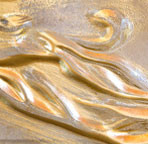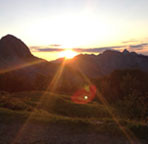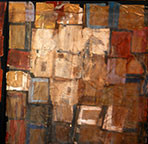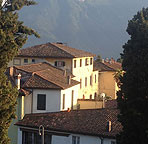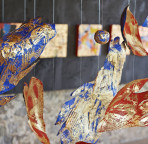Theological reflection on art does not begin with concepts like “beauty,” but in the tall and dangerous grass of the artist’s studio, in the anxiety and pressure of the technical and vocational decisions that confront the artist moment by moment. —Daniel Siedell, Who’s Afraid of Modern Art?
Curator and art critic Daniel Siedell discusses the way a work of art engages the viewer: “Whether an artist realizes it or not, every technical decision she makes in her studio proves what kind of artist she is and will be in the world, what kind of witness she will be to art. A work of art is much more and other than a confessional record of the artist’s feelings or emotions, or the result of her so-called ‘creativity’ and ‘innovation.’ A work of art is an event which unveils a world and in the process makes a claim on its audience to believe it. In his influential essay, ‘The American Action Painters” (1950), critic Harold Rosenberg observed, ‘The lone artist did not want the world to be different, he wanted his canvas to be a world.’ Made in and through the artist’s irreducible individuality, hewn through her experience in and of the world, and wrought in the most private of spaces (her studio), the work of art discloses a world for the world—addressing the inscrutable and irreducible Individuality of each viewer when it leaves the studio. And so a work of art is not offered to the world in the abstract or in theory. It is offered literally and concretely to a viewer, one who stands before it, allows herself to be confronted by it, with all of her particular pain and anxiety. To be addressed by it. It is offered to me. At that particular moment when I come upon this painting in a gallery or a museum, I am the ‘world’ to whom the artist is offering her world, as it unfolds toward me and my world. Yet the artist does not know me, does not know the me or the you who will be confronted by the work.”
Seen in this light, the “message” a work conveys is not bound by time and space and can speak beyond the artist’s own understanding or intention, as indeed, we experience through our heritage of centuries of works of art.
Comments welcome.

